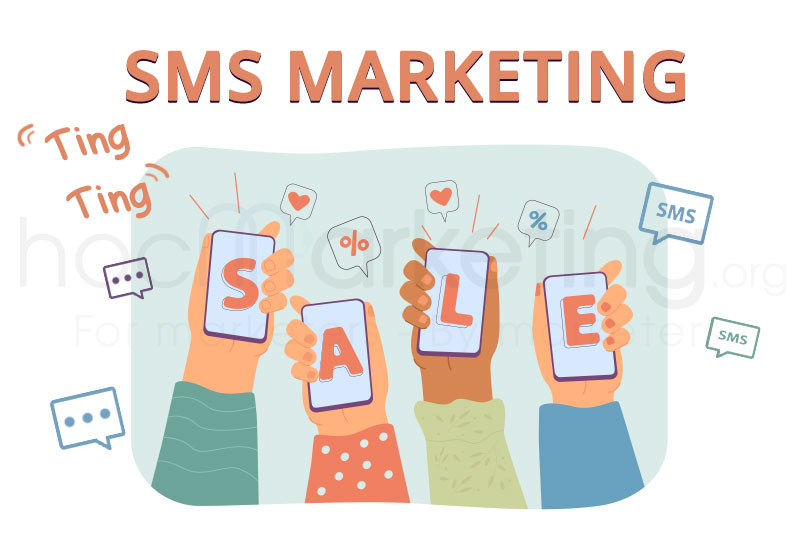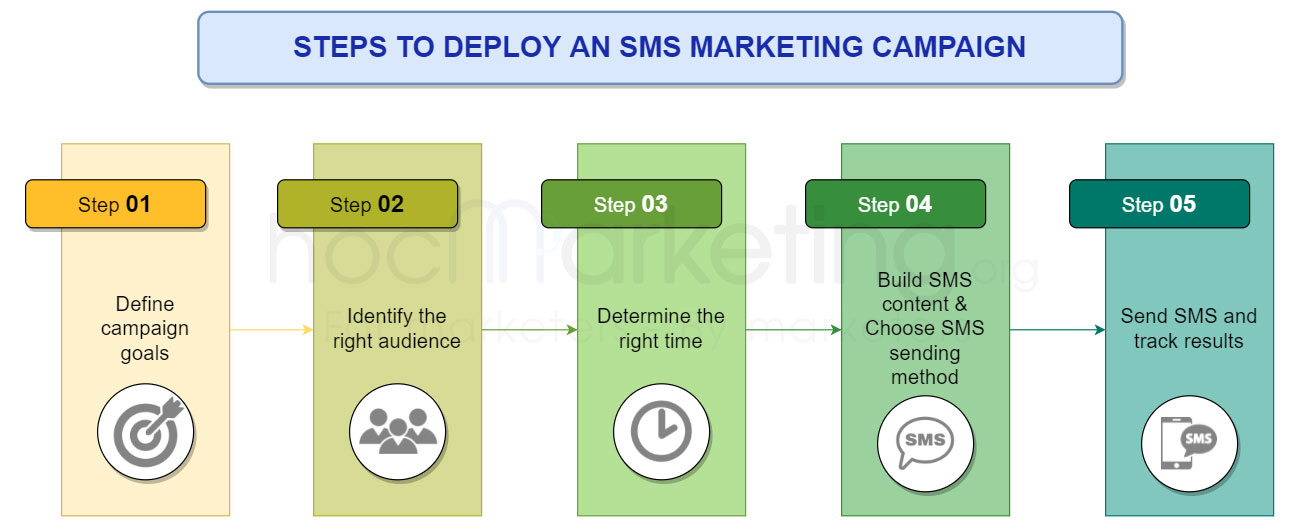
What is SMS Marketing? How to setup an SMS Marketing campaign

What is SMS Marketing? Advantages and disadvantages of SMS Marketing compared to Email Marketing. Step-by-step instructions (how) to deploy an SMS Marketing campaign
What is SMS Marketing?
SMS Marketing is a marketing method in which businesses try to achieve their marketing goals through sending text messages to target audiences on a mobile phone network platform.
Basically, the essence of SMS Marketing is relatively similar to Email Marketing, when Marketing activities are all based on sending "content" to the target audience, and the difference is only in form or specification.
Advantages of SMS Marketing
- The content of SMS Marketing is easier to reach the target audience (customers) than Email Marketing, because users can more easily open a message to view than open an email.
- High credibility when SMS Marketing is deployed in the form of Brandname (Messages to customers will automatically show the sender as Brandname (brand name) of your business.
- High interoperability: In the case of believing that the content of an SMS message contains phone number information, the possibility of the recipient clicking on that phone number to call is usually very high.
- Easier to deploy than Email
Disadvantages of SMS Marketing
- Message content is required without Vietnamese accents (for Brandname messages).
- Message content can only be plain text (text).
- The cost to deploy SMS Marketing is higher than Email Marketing. In addition to having to pay a monthly subscription, you also have to pay a fee for each SMS sent, where the calculation of the number of SMS will be based on the number of characters in the message. (The more characters the message, the higher the fee).
- Business verification (Business Registration License) is required in case the business wants to register Brandname SMS.
- Need to register a message template if you want to send Brandname SMS. In order to avoid scams that have happened, the regulations on SMS branding are increasingly dense, of which the prominent one is the regulation that businesses must register content samples with carriers before sending messages to users. .
Steps to deploy an SMS Marketing campaign
In general, the way to implement an SMS Marketing campaign is quite similar to Email Marketing, when the implementation process includes the following steps:
1. Define campaign goals
In any marketing campaign, defining the goal is always necessary because otherwise, it is easy for the implementer to lose direction during the implementation process. Need the SMS Marketing campaign that you are trying to implement targeting the following goals:
- Sales objectives: Introduce promotions, new products...
- Reminder goals: Inquiring about health, happy birthday, holidays...
- Interactive goals: Appointment reminders, notification of order status, products, maintenance, repair, application login...
2. Identify the right audience
Depending on the goal of the campaign, the selected audience will be different in many ways. For example:
- Mass audience: Phone users in a large area (province, country)
- Screening audience: Phone users who meet the criteria with gender, age, occupation, region...
- Selected Audience: Thoroughly selected mobile phone users
3. Determine the right time
The time for the message to start sending is also an important factor to consider carefully in the SMS Marketing campaign, if you don't want your business's messages to be seen as spam, annoying...
Factors related to timing include:
- Time: Date, time (For example, congratulatory messages on March 8 are usually sent between 6 and 8 am)
- Frequency: Messages are sent 1 or more times, how long is the interval between sending
- Events: What events are considered landmarks to send messages (customers order on the website, customers buy goods at the store, customers call to complain...)
4. Build SMS content & Choose SMS sending method
The method of sending SMS (regular message or Brandname message) will affect the content of SMS sent. For regular SMS (Text SMS, Imessage, Messenger...), you can icon or even images, videos in the message content. While Brandname SMS (brand message) only allows you to use plain text without Vietnamese accents. Of course, Brandname SMS will come with higher credibility than regular SMS.
5. Send SMS and track results
After completing the above steps, we proceed to the final step of sending SMS and tracking the results. Depending on each case, sending SMS will be done by different methods. For regular messages, you can send them through your phone, or through some software, devices that support connecting to the phone's SIM. For Brandname SMS, you can send messages through available software provided by Brandname SMS service providers, or management software such as CRM, ERP, Marketing software...
And of course, don't forget to measure the results obtained through metrics such as open rate (see messages), the percentage of recipients clicking on the phone number (or link), the number of new customers increasing from the source of SMS. , increased revenue from SMS sources...











